Supplements can be one of the best tools for boosting nutrient levels and supporting overall wellness.
However, a supplement’s effectiveness largely depends on its nutrient bioavailability, which refers to how effectively the body absorbs and utilizes the nutrients it contains.
Learning how to choose the most bioavailable vitamins and supplements ensures you get the maximum benefits and bang for your buck.
Let’s learn exactly what nutrient bioavailability means, factors that impact the bioavailability of supplements, and how to choose the most bioavailable supplements to meet your individual needs.
What is Nutrient Bioavailability?
Most supplement users are aware of studies suggesting we excrete a portion of the vitamins we ingest.
Although controversial, these studies highlight a significant issue with dietary supplements: poor absorption rates.
And what causes poor absorption? Poor bioavailability.
So, what is bioavailability?
As previously discussed, bioavailability refers to the percentage of a nutrient that is absorbed and utilized by the body after ingestion.[1]
This means you can have two forms of vitamin D in the same dose, such as vitamin D2 and vitamin D3, for example, and one form (typically the vitamin D3) will have a higher absorption rate.[2]
Although research on the most bioavailable forms of all nutrients is ongoing, we know that some forms are more absorbable than others, which we’ll discuss further in subsequent sections.
How Nutrient Absorption Works
So, what exactly happens to vitamins and nutrients once they’re ingested from supplements?
Like foods, first they go through the digestive system, where they’re broken down into tiny molecules that go on to be absorbed by the gut.
Minerals differ in that they must be broken down into electrically charged ions for absorption.
After that, they are metabolized in the liver before entering the bloodstream, where they are utilized or stored for future use.
This digestion, absorption, and metabolism process is influenced by the nutrient forms as well as other individual factors, which we’ll cover next.
Other Factors Affecting Nutrient Bioavailability of Vitamins & Supplements
Different supplement forms and delivery systems can significantly increase or decrease absorption, but they’re not the only factor.
Other factors that may inhibit nutrient bioavailability:[3-13]
- Genetic variations, like MTHFR, can affect the absorption of certain forms of B vitamins, like folic acid and vitamin B12
- Digestive function or gut health issues can impact how effectively nutrients are absorbed
- Various diet and lifestyle factors, such as caffeine, alcohol, ultra-processed food, and sugar consumption, can interfere with nutrient absorption
- A lack of water (dehydration) and fat can also affect the absorption of water- and fat-soluble vitamins
- Certain medications can interfere with nutrient absorption and/or deplete nutrients
- The supplement dosage, generally higher doses increase nutrient status more quickly, but this can also depend on the supplement form. The better the form, the lower the effective dose
- Stress can deplete nutrients via its effects on digestion and overall health
- Synergistic ingredients, or lack thereof, can either enhance or hinder the absorption of specific nutrients
Although we can’t control all these factors, being aware of them can help you work with your healthcare practitioner to maximize your supplement protocol.
Other factors that may enhance nutrient bioavailability
- Synergistic nutrients, such as taking iron with vitamin C [14]
- Nutrient timing in relation to other dietary habits, such as caffeine intake or alcohol[7][8]
- Reducing stress, which can help optimize digestion[9]
- Addressing digestive and gut issues may improve overall digestion, which may positively impact nutrient absorption[6]
- Taking supplements with or without food or water. Although most supplements are best tolerated with food, some, such as certain B vitamins and iron, may absorb better or equally well when taken on an empty stomach.* Also, as mentioned previously, fat-soluble nutrients, such as vitamins A, D, E, & K, are best absorbed when taken with some fat, while water-soluble vitamins, such as B and C, are absorbed better when taken with water.
- Ensuring your vitamins aren’t expired. As discussed in Do Vitamins Expire, supplements may lose potency after one to two years on the shelf, especially if they aren’t stored properly
Be sure to store your supplements in a cool, dark place and follow the manufacturer’s recommendations for special storage requirements, such as refrigeration for certain probiotics, syrups, and liposomal tinctures.
*Note: Although some nutrients may be best absorbed on an empty stomach, it’s not essential to take them without food, especially if it makes you feel sick. It’s always better to take them with food than not at all.
Related reading: What is the Best Time of Day to Take Vitamins?
10 Tips for Choosing the Most Bioavailable Supplements
Research on the most bioavailable forms of nutrients is ongoing and ever-evolving.
However, we do know certain forms of nutrients are more bioavailable than others, in general, and for specific individuals.
Here are some tips to help you choose the most bioavailable supplements, optimize absorption, and maximize the benefits of your investment.
Tip 1: Take Iron with Vitamin C & Away From Fiber, Caffeine, & Calcium
Many people take iron supplements to help address and/or prevent deficiencies and insufficiencies.
However, iron absorption can be inhibited by many factors, including caffeine, fiber, and calcium.
Its absorption rate may also be increased by vitamin C.[14]
The Takeaway: To maximize bioavailability, take your iron supplement separately from fiber supplements, high-fiber meals, calcium supplements, or high-calcium foods (such as dairy products), and consider taking it with vitamin C or vitamin C-rich foods.
Related reading: 20+ Food & Supplement Sources of Iron for Omnivores, Vegans, & Everyone in Between
Tip 2: Consider Magnesium Glycinate or Citrate
The best form of magnesium is a hot topic in the bioavailability space, and for years, magnesium citrate was considered the optimal form.
However, new research suggests magnesium glycinate may be a new contender for best bioavailability.
This is partly due to its gentleness on the stomach, which makes it easier to take a higher dose, often resulting in faster results and noticeable benefits.
Ultimately, studies have shown that organic forms of magnesium, such as citrate and glycinate, are better absorbed than inorganic forms, such as oxide.[15]
Magnesium citrate is also highly bioavailable and often recommended to help with occasional constipation.
Other forms of magnesium, such as magnesium oxide, aspartate, magnesium taurinate, and magnesium alpha-ketoglutarate, may also be helpful for specific support and health goals.
Talk to your doctor about the best form for you, and see Magnesium Glycinate vs. Citrate: Which Form Is Best? for more information.
Tip 3: Choose Coenzymated B-Vitamins
Also known as methylated or activated B vitamins, coenzymated B vitamins are B vitamins in their activated, ready-to-use, most bioavailable form.[16]
In contrast, non-activated B-vitamins must be converted into their active (or coenzymated) form by the body before they can be absorbed, metabolized, and utilized.
If you’re otherwise healthy with typical genetic expressions, this may not present a problem.
However, anyone with genetic variations, such as MTHFR, or other conditions impacting nutrient activation, assimilation, and absorption may be compromised in their ability to absorb non-activated/non-co-enzymated B vitamins.[17][18]
Examples of coenzymated forms of B vitamins include:
- Benfotiamine (activated form of B1)
- Riboflavin 5’ phosphate (vitamin B2)
- Methylcobalamin (vitamin B12)
- Adenosylcobalamin (vitamin B12)
- Pyridoxine hydrochloride, pyridoxal 5’ phosphate, pyridoxine alpha-ketoglutarate hydrochloride (vitamin B6)
- Methylfolate or L-5-Methyltetrahydrofolate calcium salt (folate)
Learn more in: What Is a Coenzymated Vitamin? Exploring Coenzymated B12 Benefits
Tip 4: Take Advantage of Nutrient Pairing With a Multivitamin
Whole, real foods contain a synergistic matrix of nutrients designed to maximize bioavailability.
This is why eating more whole foods is the best way to get your vitamins, minerals, and other nutrients.
However, a next-best option is to take a high-quality, bioavailable multivitamin, designed to mimic this natural matrix.
A high-quality multivitamin will contain all the essential vitamins and minerals you need, in optimal synergistic doses for maximum benefit.
Examples of nutrient pairings that promote greater bioavailability include: [19-23]
- Calcium, magnesium, and vitamin D
- Iron and vitamin C
- Vitamin B6 + magnesium
- B vitamins as a complete B-complex (vitamins B1, B2, B3, B5, B6, B7, B9, B12)
- Vitamin A + zinc
The takeaway: A high-quality multivitamin provides a synergistic blend of nutrients for maximum bioavailability.
Note: Some individuals may benefit from taking single-nutrient vitamins or minerals in bioavailable forms to address deficiencies or insufficiencies. Consult your healthcare practitioner for personalized recommendations.
Shop Country Life’s Multivitamin Supplements for women, men, 50+, and more.
Tip 5: Take Turmeric Or Curcumin With Piperine
Turmeric and curcumin (its primary active plant compound) supplements have become popular for supporting joint health and mobility, immune function, inflammatory response, skin health, digestion, and much more.
However, research suggests turmeric and its curcuminoids are poorly absorbed without the presence of piperine, an active compound in black pepper.[24]
This aligns with the traditional use of turmeric in Ayurvedic (Indian traditional medicine) cooking and the making of golden milk, which typically calls for the addition of black pepper.
The takeaway: Choose turmeric or curcumin supplements with black pepper/piperine (and combine the two in cooking) for maximum bioavailability.
Tip 6: Take Water-Soluble Vitamins With Water & Fat-Soluble Vitamins With Fat
This one couldn’t be more simple.
Fat-soluble vitamins require the presence of fat for maximum bioavailability, and water-soluble vitamins require the presence of water.
Fat-soluble vitamins & nutrients include:
- Vitamin A
- Vitamin D
- Vitamin E
- Vitamin K
- Omegas, such as fish oil
Water-soluble vitamins include:
- B vitamins
- Vitamin C
The takeaway: Take your vitamins with a glass of water and a meal to maximize absorption, unless otherwise advised.
Tip 7: Take B-Vitamins With Probiotics
Studies suggest that B-vitamin absorption may be enhanced by probiotics, with one study showing enhanced absorption rate between 14-71%![25-28]
This is likely due to the interactions between friendly gut microbes and B vitamins during the digestive process.
The takeaway: Consider taking your probiotics or eating probiotic-rich foods with your B vitamins.
Alternatively, some multivitamins, such as Country Life’s Core Daily-1® for Women and Core Daily-1® for Men, offer B vitamins plus probiotics in one convenient formula.
Related reading: The Role of B-Vitamins in Stress Management Support
Tip 8: Choose Vitamin D3 Vs. D2
Vitamin D, “the sunshine vitamin,” is a commonly recommended supplement for supporting bone function, immune function, and overall well-being.[29]
Most doctors and practitioners recommend vitamin D3, also known as cholecalciferol, due to its greater bioavailability.
However, vitamin D2 is still found in certain supplements, including multivitamins.
Fun fact: Although vitamin D3 is typically derived from animal sources (such as lanolin), there is now a natural vegan option sourced from lichen.
The takeaway: Opt for vitamin D3 supplements vs. vitamin D2. The cost is typically comparable, and D3 is considered the superior form.
Shop Country Life’s Vitamin D supplements, including gummies and vegan D3 from lichen.
Tip 9: Consider Zinc Chelate for Optimal Absorption
Zinc supplements are popular for supporting immune function, skin health, and gut health.
But bioavailability can vary, which is why many people and practitioners choose chelated zinc.[30]
Put simply, chelated zinc is a form of zinc that’s attached to a chelating agent, like an amino acid.
These chelating agents form bonds with metal ions (like zinc, iron, and copper), resulting in a more bioavailable form of zinc.
Forms of chelated zinc include:
- Zinc amino acid chelate
- Zinc citrate
- Zinc picolinate
The takeaway: Chelated minerals, like zinc picolinate, often have higher bioavailability than non-chelated minerals.
Ask your practitioner about the best type of zinc for you.
Tip 10: Take Calcium With Magnesium & Vitamin D
New research on the relationship between calcium, magnesium, and vitamin D has transformed the way people take calcium supplements.
Now, many doctors and health experts recommend taking calcium with vitamin D, which enhances absorption, and magnesium, which optimizes the absorption of vitamin D.[31-34]
The takeaway: Talk to your healthcare practitioner about using a calcium, vitamin D, and magnesium supplement for improved bioavailability, like Country Life’s Calcium Magnesium Vitamin D Complex.
Already taking vitamin D? In that case, consider a calcium-magnesium supplement, such as Target-Mins® Calcium Magnesium Tablets.
Note: not everyone needs a calcium supplement, as excessive calcium intake can be counterproductive.
Always consult your healthcare practitioner for personalized recommendations.
Where to Find Bioavailable Vitamins and Supplements
Now that you understand the factors involved in the bioavailability of nutrients, let’s talk supplements.
Country Life offers a range of supplements with bioavailable forms of vitamins and minerals like coenzymated B-vitamins, chelated zinc, vitamin D3 (regular and vegan), and synergistic multivitamins, including:
- Multivitamins for women, men, all genders, vegans, and 50+. Available in tablets, gummies, and chewables
- Vitamin D in classic and vegan forms, softgels or gummies
- Our NEW Realfood Organics® Prenatal Multivitamin
- B-vitamins, including coenzymated (methylated) formulas, vitamin B12, B Complex, Biotin, B6, and more
- Fish Oils & Omegas from anchovy, mackerel, sardine, herring, salmon, and tested for purity
- Iron supplements are available in multiple forms and potencies
- Vitamin C gummies, tablets, and chewables
- Probiotics and Digestive Enzymes
- Magnesium as magnesium glycinate, citrate, and other forms
All our supplements are made in a certified gluten-free and certified organic manufacturing facility that’s third-party certified to cGMP standards.
We also test all our products, from raw materials to finished bottles, for purity, potency, and strength.
References Mentioned in This Article
- “Bioavailability and factors affecting nutrient absorption”. Nutrition Research Reviews.
- “Effectiveness of vitamin D2 compared with vitamin D3 replacement therapy in a primary healthcare setting: a retrospective cohort study”. Qatar Med J.
- The Coenzyme Forms of Vitamin B12: Toward an Understanding of their Therapeutic
- Potential.” Gregory Kelly, N.D. Alt Med Review.
- “Folate Insufficiency Due to MTHFR Deficiency Is Bypassed by 5-Methyltetrahydrofolate”. Journal of Clinical Medicine.
- “Human Gut Microbiome: A Connecting Organ Between Nutrition, Metabolism, and Health”. Int J Mol Sci.
- “Effects of caffeine on health and nutrition: A Review”. Wolde, Tsedeke. (2014).
- “Higher intakes of dietary caffeine are associated with 25-hydroxyvitamin D deficiency”. Int J Vitam Nutr Res.
- “The effects of chronic stress on health: new insights into the molecular mechanisms of brain-body communication”. Future Sci OA.
- “The Influence of Alcohol Consumption on Intestinal Nutrient Absorption: A Comprehensive Review. Nutrients.
- “Vitamin Supplements as a Nutritional Strategy against Chronic Alcohol Consumption? An Updated Review”. Antioxidants.
- “Evidence of Drug–Nutrient Interactions with Chronic Use of Commonly Prescribed Medications: An Update”. Pharmaceutics.
- “Drug-Nutrient Interactions. Linus Pauling Institute Micronutrient Information Center”. Oregon State University.
- “Using Vitamin C with Iron: Enhancing Absorption and Other Benefits.” Osman, Mahdy.
- “Comparative Clinical Study on Magnesium Absorption and Side Effects After Oral Intake of Microencapsulated Magnesium (MAGSHAPETM Microcapsules) Versus Other Magnesium Sources”. Nutrients.
- “Comparative Bioavailability and Utilization of Particular Forms of B12 Supplements With Potential to Mitigate B12-related Genetic Polymorphisms”. Integrative Medicine: A Clinician's Journal.
- “The Coenzyme Forms of Vitamin B12: Toward an Understanding of their Therapeutic Potential.” Gregory Kelly, N.D. Alt Med Review.
- “Folate Insufficiency Due to MTHFR Deficiency Is Bypassed by 5-Methyltetrahydrofolate”. Journal of Clinical Medicine.
- “Magnesium status and supplementation influence vitamin D status and metabolism: Results from a randomized trial”. The American Journal of Clinical Nutrition.
- “Magnesium Absorption: Mechanisms and the Influence of Vitamin D, Calcium and Phosphate”. The Journal of Nutrition"
- “Impact of magnesium supplementation, in combination with vitamin B6, on stress and magnesium status: secondary data from a randomized controlled trial”. Magnes Res.
- “Interactions between zinc and vitamin A: an update”. Am J Clin Nutr.
- “Effect of zinc deficiency on hepatic enzymes regulating vitamin A status”. J Nutr.
- “Influence of piperine on the pharmacokinetics of curcumin in animals and human volunteers”. Planta Med.
- “Unveiling of dietary and gut-microbiota derived B vitamins: Metabolism patterns and their synergistic functions in gut-brain homeostasis”. Critical Reviews in Food Science and Nutrition.
- “Effects of Probiotics, Prebiotics, and Synbiotics on Human Health”. Nutrients.
- “Vitamin B12 ameliorates gut epithelial injury via modulating the HIF-1 pathway and gut microbiota”. Cell. Mol. Life Sci.
- “The combined use of B vitamins and probiotics promotes B vitamin absorption and increases Akkermansia abundance”. Food Funct.
- “Vitamin D: An Evidence-Based Review”. The Journal of the American Board of Family Medicine.
- “Comparative Absorption and Bioavailability of Various Chemical Forms of Zinc in Humans: A Narrative Review”. Nutrients.
- “Calcium and Vitamin D: Important for Bone Health”. National Institutes Of Arthritis And Musculoskeletal And Skin Diseases.
- “Essential Nutrient Interactions: Does Low or Suboptimal Magnesium Status Interact with Vitamin D and/or Calcium Status?” Advances in Nutrition.
- “Magnesium status and supplementation influence vitamin D status and metabolism: Results from a randomized trial”. The American Journal of Clinical Nutrition
- “Magnesium Absorption: Mechanisms and the Influence of Vitamin D, Calcium and Phosphate”. The Journal of Nutrition.


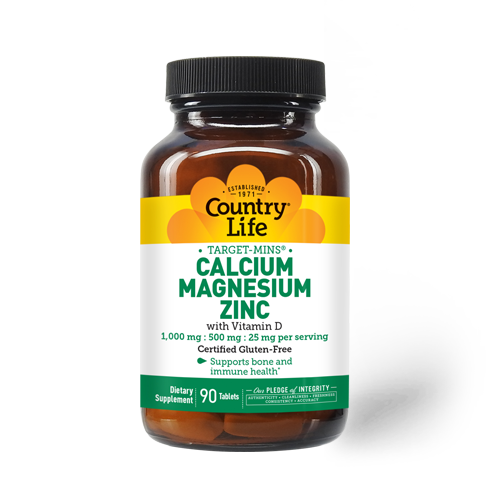
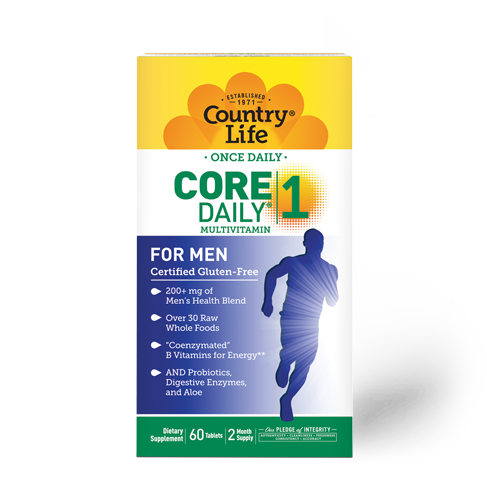
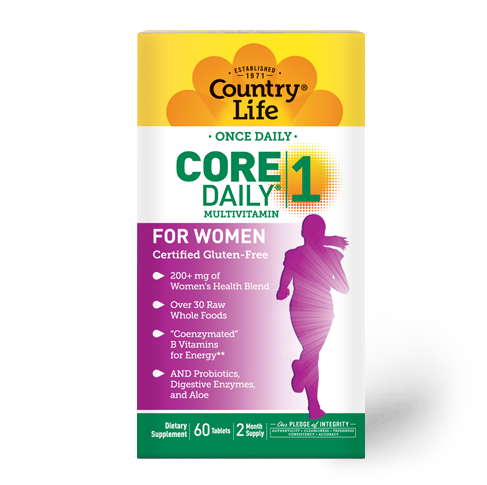
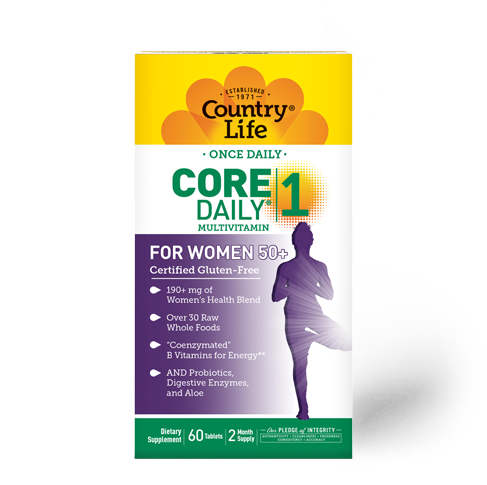
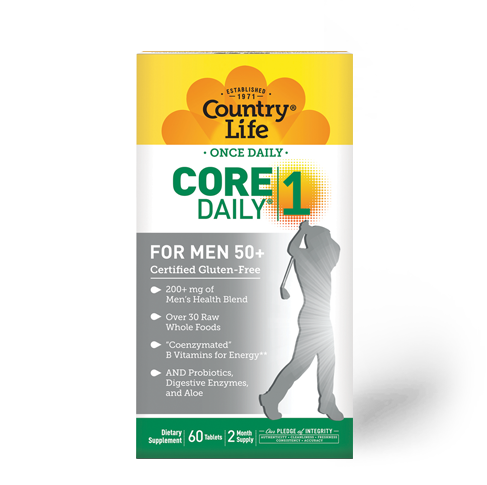










Share:
Are Your Supplements Working? 7 Signs They Are
7 Best Intermittent Fasting Supplements